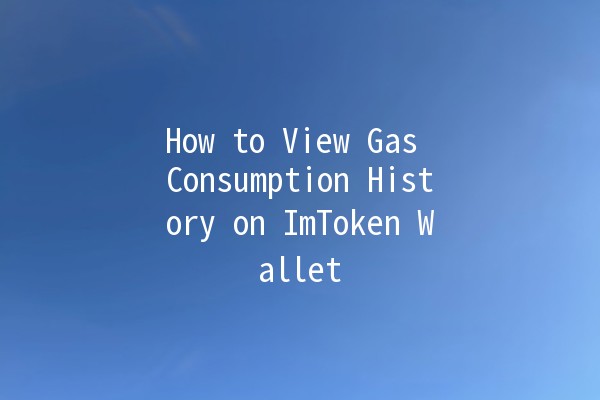Understanding how to view gas consumption history in your ImToken wallet is essential for any cryptocurrency user, especially if you frequently engage in transactions on the Ethereum blockchain or other compatible networks. Gas fees can fluctuate, and keeping track of your past gas consumption can help you assess your spending and optimize your future transactions.
Gas refers to the unit that measures the amount of computational effort required to execute specific operations on the Ethereum blockchain, such as performing transactions or deploying smart contracts. Each action consumes a different amount of gas, and users pay these fees to incentivize miners to process and confirm transactions. Gas prices can vary greatly depending on network congestion.
ImToken, a popular Ethereum wallet, allows users to store, send, and receive cryptocurrencies. One critical function of the ImToken wallet is its ability to display gas consumption history, giving users insight into their transaction costs over time. Understanding your gas history can assist in making informed decisions regarding future transactions.
To begin, open the ImToken app on your mobile device. Ensure you are logged in to your account.

Once logged in, locate the "Assets" section. Here, you will find a list of all the cryptocurrencies you hold.
Within the transaction history, you will see details of all your recent transactions. Each entry will typically display the following:
Date and Time: When the transaction was executed.
Transaction Amount: The amount of ETH or tokens transferred.
Gas Price: The price per unit of gas at the time of the transaction.
Gas Limit and Used: The total gas limit set for the transaction and how much was actually used.
Total Fee: The total fee paid for that transaction, calculated as Gas Price multiplied by Gas Used.
Suppose during times of high network traffic, you notice that your gas fees have increased significantly. By comparing your gas consumption history, you might decide to adjust the timing of your transactions. For instance, you may choose to execute transactions during offpeak hours when gas prices are lower.
Staying informed about current gas prices can help you decide the best times to conduct transactions. Use external resources to set up alerts for when gas prices drop to a more manageable level.
Whenever you initiate a transaction, you can set a gas limit. Setting it too low can lead to failed transactions while setting it too high can overestimate consumption. By analyzing your previous transactions, you can set a more accurate gas limit based on past needs.
Several external websites and applications provide gas tracking services. Use these tools to monitor and compare gas prices across different platforms to ensure you're getting the best rates possible.
As mentioned earlier, the Ethereum network experiences high traffic at certain times. By reviewing your gas history and understanding your transaction patterns, you might find specific times that offer lower fees.
Instead of executing multiple small transactions, consider batching them into a single transaction whenever possible. This approach can significantly decrease the total gas fees incurred over time.
Gas is essentially a fee paid to miners to have a transaction included in a block on the blockchain. It compensates miners for the computational work required to process your transaction.
Gas prices fluctuate based on network demand. The busier the network, the higher the fees are likely to be, as miners prioritize transactions with higher fees.
To minimize gas fees, try executing transactions during offpeak times, utilizing gas tracker tools, and optimizing your gas limit to match your transaction's needs.
Yes, if the tokens are on a blockchain that requires gas fees, you will typically be able to view their transaction history in a similar manner within the ImToken wallet.
If a transaction fails due to insufficient gas, check your gas limit settings. You may need to increase the limit for future transactions to ensure they are successfully processed.
While it is challenging to predict exact future gas costs due to market fluctuations, monitoring trends in gas prices through external tools can help you develop a better understanding of when to conduct transactions.
Understanding your gas consumption history on ImToken not only aids in effective financial planning but also empowers you to make informed decisions about future transactions. By leveraging the insights gained from your transaction history, optimizing your approach to gas fees, and utilizing external tools, you can navigate the world of digital finance more efficiently. Whether you’re a casual user or a seasoned investor, being proactive about managing gas fees will ultimately lead to more strategic decisions and savings in your cryptocurrency endeavors.